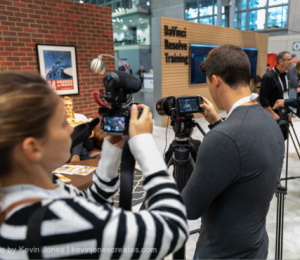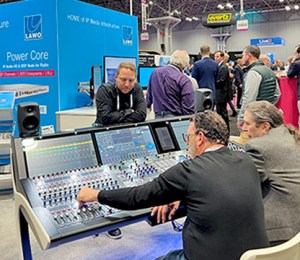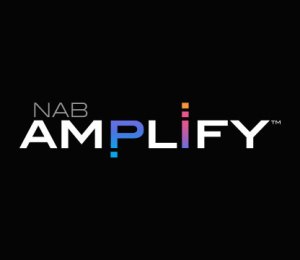Q&A Series
October 24–26, 2023 | Javits Center | New York, NY

Visual Storytelling Conference
Luisa Casasnovas Winters, Future Media Concepts, answers some questions on the biggest trends and resulting challenges for the content community.
Add the Visual Storytelling Conference to your registration to gain more valuable insight!
What are the biggest trends impacting the community/industry right now?
- Short-form Content: Platforms like TikTok and Instagram have popularized short, snappy visual content. These platforms demand that storytellers convey compelling narratives in a condensed timeframe, which has influenced how stories are crafted and shared.
- Environmental and Social Responsibility: Climate change, social justice issues, and other global challenges have influenced storytellers to reflect these themes in their work. Visual narratives around these topics help raise awareness and drive change.
- Cross-media Storytelling Stories are no longer confined to one medium. A narrative might begin in a book, continue in a video game, and conclude in a movie. This cross-pollination enriches storytelling but also requires creators to be versatile and adaptive.
- Visual Tech Advancements: The continuous advancements in camera tech, visual effects, and post-production tools allow creators to craft visually stunning narratives that were previously impossible or prohibitively expensive.
- Diverse Representation: There’s been a growing demand and emphasis on telling diverse and underrepresented stories. This includes not only stories about diverse characters but also stories created by diverse filmmakers, writers, and artists.
- Visual Tech Advancements: The continuous advancements in camera tech, visual effects, and post-production tools allow creators to craft visually stunning narratives that were previously impossible or prohibitively expensive.
What challenges does the community need to overcome, because of these trends?
- Short-form Content:
- Depth vs. Brevity: Telling a compelling story in a limited timeframe can mean sacrificing depth.
- Saturation: The abundance of short-form content makes standing out exceptionally challenging.
- Environmental and Social Responsibility:
- Striking a Balance: It can be challenging to address serious issues without coming across as preachy or sacrificing entertainment value.
- Backlash: Addressing controversial topics can lead to backlash from different segments of the audience.
- Cross-media Storytelling:
- Consistency: Maintaining narrative consistency across different mediums is challenging.
- Accessibility: Ensuring that every segment of the audience can access all parts of the story, especially if they’re spread across different platforms or mediums.
- Diverse Representation:
- Authenticity: Telling diverse stories requires an authentic perspective, which might necessitate collaborations or consultations.
- Avoiding Tokenism: There’s a challenge in ensuring diversity is genuine and not just ticking boxes.
- Visual Tech Advancements:
- Keeping Up: The rapid pace of technological advancement means storytellers and production houses need to constantly update their equipment and skills.
- Cost: Advanced tech can be expensive, potentially barring indie creators from utilizing the latest tools.
What’s one thing you wish more media pros knew about?
If there’s one area that would be beneficial for more media professionals to understand deeply, it’s the ethics of content creation and dissemination. Here’s why: The power of media is undeniable. From shaping public opinion to driving cultural shifts, media has an enormous influence on society. With this influence comes a great responsibility.
- Misinformation and Disinformation: In the age of digital media, fake news, and deepfakes, it’s become increasingly difficult for audiences to discern fact from fiction. Media professionals should be equipped with the skills to identify and combat misinformation and understand the implications of spreading it, even unintentionally.
- Representation Matters: Understanding the impact of representation in media — whether it’s related to race, gender, sexuality, disability, or other areas — is crucial. Inaccurate or stereotypical portrayals can perpetuate harmful biases.
- Privacy Concerns: Especially with documentaries or news stories, there’s a fine line between public interest and invasion of privacy. Knowing where that line is and respecting it is crucial.
- Clickbait and Sensationalism: While catchy headlines and dramatic narratives might boost views or clicks in the short term, they can erode trust in the long run. It’s essential to prioritize accuracy and integrity over sensationalism.
- Mental and Emotional Impact: Content, especially that which deals with traumatic or triggering subjects, can have a significant emotional impact on viewers. Media professionals should be aware of this and approach such topics with sensitivity and care.
- Economic Implications: Being aware of the financial and economic implications of certain content (e.g., advertising, sponsored content) is crucial to maintain transparency and trust.
- Cultural Sensitivity: As the world becomes more interconnected, media professionals often create content for global audiences. Understanding and respecting cultural nuances and sensitivities is vital to avoid misunderstandings or unintentional offense.
A deep understanding of media ethics ensures that content creators not only produce high-quality content but also contribute positively to societal discourse. It fosters trust between the media and its consumers, ensuring the longevity and relevance of the industry.
What are the top 3 things that attendees should go hunt down on the show floor to expand what they just learned in your sessions?
- Technology and Tools:
- Software Demos: Seek out booths showcasing the latest software for content creation, editing, and distribution. This might include novel writing tools, screenwriting software, video editing suites, AR/VR development platforms, or advanced animation tools.
- Hardware Innovations: New cameras, microphones, VR headsets, and other equipment can revolutionize the way stories are captured and shared. Trying out these tools firsthand can provide insights into their potential applications in storytelling.
- Networking Opportunities:
- Industry Experts: Connect with professionals who have hands-on experience in innovative storytelling techniques. Their insights and experiences can provide invaluable lessons.
- Collaborative Platforms: Some booths might represent agencies, platforms, or networks that connect storytellers with collaborators, from illustrators to cinematographers. These can be golden opportunities for attendees to expand their storytelling horizons by teaming up with other creatives.
- Educational Resources:
- Workshops and Mini-Sessions: Many show floors have dedicated areas for mini-workshops or hands-on sessions. These are opportunities to deep-dive into specific storytelling techniques or tools.
- Literature and Training Materials: Booths might offer books, course pamphlets, or training guides on various aspects of storytelling. These resources can provide attendees with extended learning opportunities beyond the conference.
In addition to these specific areas, attendees should remain curious and open-minded. Sometimes, the most unexpected booths or interactions can lead to groundbreaking storytelling ideas. It’s all about making connections—both in terms of people and concepts.
What discussions should they be having with the exhibitors?
- Understanding Product/Service Capabilities:
- “How does your product/service enhance the storytelling process?”
- “What unique features does your tool offer that differentiate it from others in the market?”
- “Can you show me a demo or provide a real-world example of how your product/service has been used in storytelling?”
- Integration with Existing Tools:
- “How does your product integrate with the tools/software I’m currently using?”
- “Are there any compatibility issues or prerequisites I should be aware of?”
- Trends and Innovations:
- “What trends in storytelling have you observed, and how does your product address them?”
- “How do you envision the future of storytelling, and how is your company preparing for it?”
- Educational Opportunities:
- “Do you offer training or workshops for your product?”
- “Are there any resources or tutorials available for someone new to this tool?”
- Networking and Collaborations:
- “Are there any storytellers or organizations you’d recommend connecting with based on your product’s users or partnerships?”
- “Do you have case studies or success stories showcasing collaborations facilitated through your platform or tool?”
- Feedback and Customization:
- “I have a specific need or challenge related to my storytelling process. How can your product/service help address that?”
- “Do you customize solutions based on individual or organizational needs?”
- Pricing and Accessibility:
- “What’s the pricing model for your product/service?”
- “Do you offer trial versions, discounts for educators/students, or nonprofit organizations?”
- User Community and Support:
- “Do you have a user community where I can connect with other storytellers using your product?”
- “What kind of after-sales support and updates can I expect?”
- Ethical Considerations:
- “How does your company handle data privacy and security, especially if your tool requires user data?”
- “Are there ethical guidelines or considerations I should be aware of when using your product/service for storytelling?”
- Feedback for the Exhibitor:
- “I learned about [specific topic] in the conference. It would be interesting to see how your product could evolve to cater to that.”


